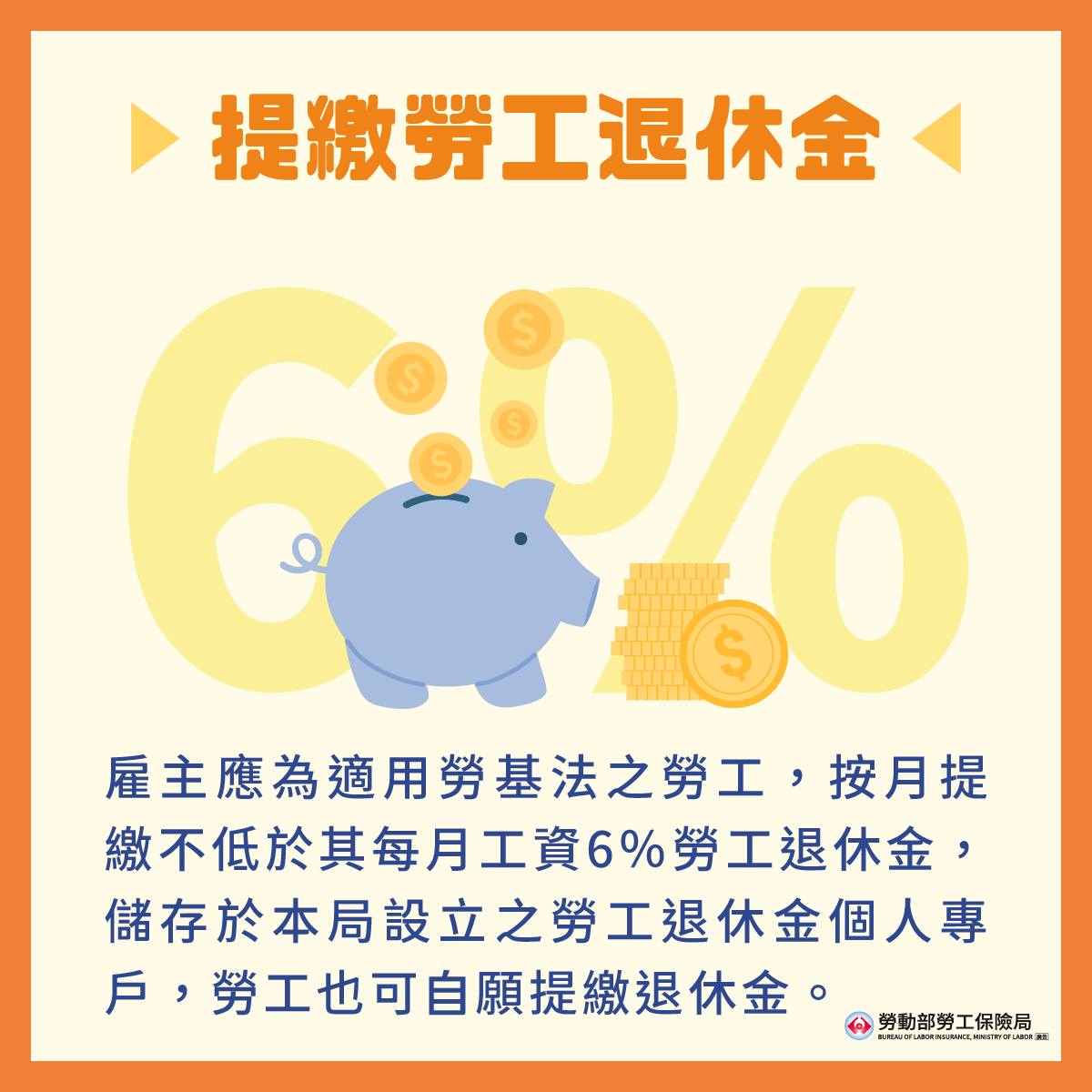With the blooming of phoenix flowers, the graduation season has arrived. Many graduates are about to enter the workforce and become fresh members of society. To help them smoothly adapt to work life, here are some important labor protection knowledge points: labor insurance, employment insurance, occupational accident insurance, and labor pension.
According to the Labor Pension Act, employers must contribute to the retirement pension for workers covered under the Labor Standards Act (including local nationals, foreign spouses, spouses from mainland China, Hong Kong, Macau, and foreigners with permanent residency). From the date of employment to the date of resignation, employers must contribute no less than 6% of the employee's salary each month to the individual labor pension account set up by the Bureau of Labor Insurance. Additionally, workers can voluntarily contribute to their pension, up to 6% of their monthly salary. Starting early with voluntary pension contributions can ensure more substantial retirement benefits for new workforce entrants or student part-timers. Here are some key highlights:  Labor Insurance provides basic living protection for workers during their employment period and after retirement (Image / Retrieved from the Bureau of Labor Insurance).
Labor Insurance provides basic living protection for workers during their employment period and after retirement (Image / Retrieved from the Bureau of Labor Insurance).
Three Major Benefits of Voluntary Pension Contributions
- Tax Benefits
Voluntary contributions are not counted as part of the annual salary income, reducing the taxable amount and allowing you to enjoy tax benefits easily.
- Guaranteed Earnings Mechanism
The cumulative earnings during the voluntary contribution period will not be lower than the two-year fixed deposit interest rate of local banks, ensuring continuous growth of your pension.
- Securing Retirement Life
Voluntary pension contributions can accumulate more principal, providing better security for your retirement life. Employers should contribute to the labor pension for their employees. The monthly contribution should be at least 6% of the employee's monthly salary (Image / Retrieved from the Bureau of Labor Insurance)
Employers should contribute to the labor pension for their employees. The monthly contribution should be at least 6% of the employee's monthly salary (Image / Retrieved from the Bureau of Labor Insurance)
Important Notes on Voluntary Pension Contributions
How to Apply
Workers can notify their employer verbally or in writing to contribute to their pension voluntarily, and the employer will report this to the Bureau of Labor Insurance.
Adjustment and Cessation of Contributions
Workers can adjust their voluntary contribution rate up to twice a year and can apply to stop contributions at any time.
Notification and Records
Employers should indicate the contribution amount on the worker's monthly salary statement or notify the worker in writing or electronically. At the end of the year, employers should issue a receipt to the worker.
Other Participants
Besides workers, employers, self-employed individuals, and commissioned workers can also participate in voluntary pension contributions, enjoying the same tax benefits and other advantages.
Choosing the Appropriate Insured Salary
Regarding labor insurance, choosing the appropriate insured salary is crucial. An insured salary that is too low will affect your protection. It is recommended to insure based on actual income to obtain the most comprehensive insurance coverage.







